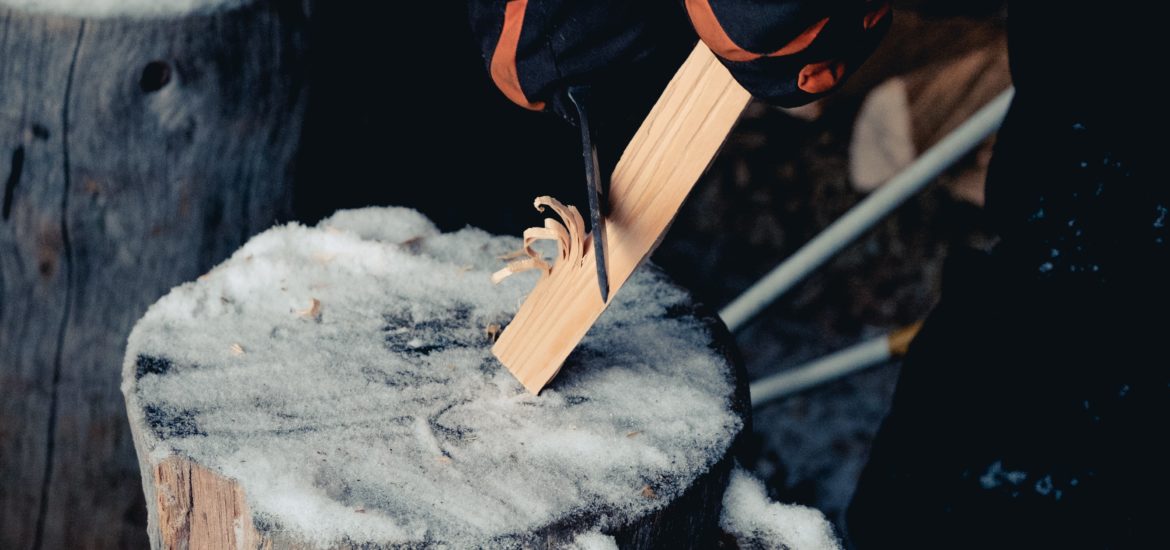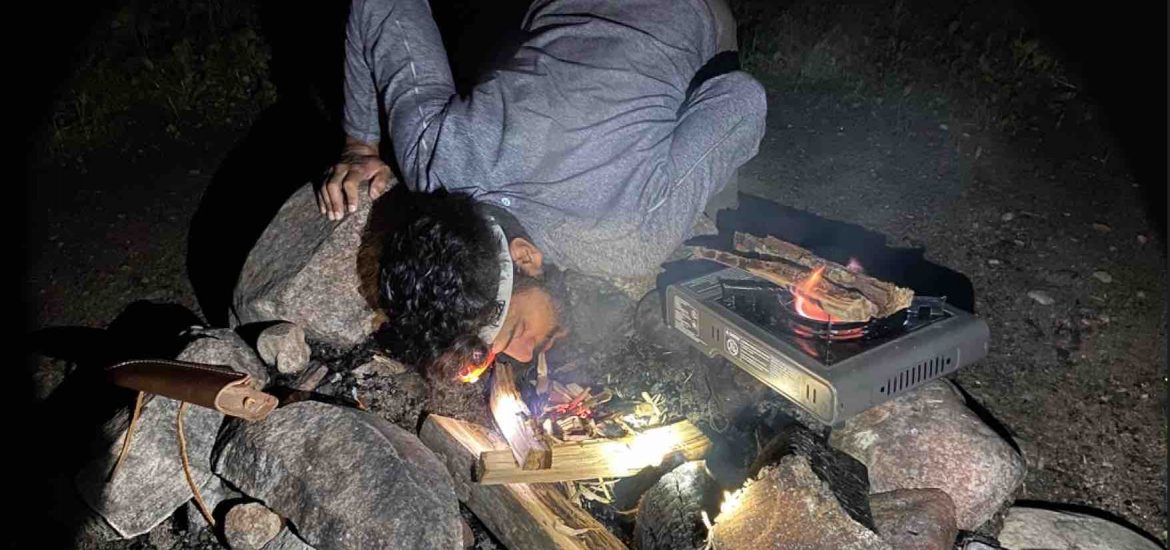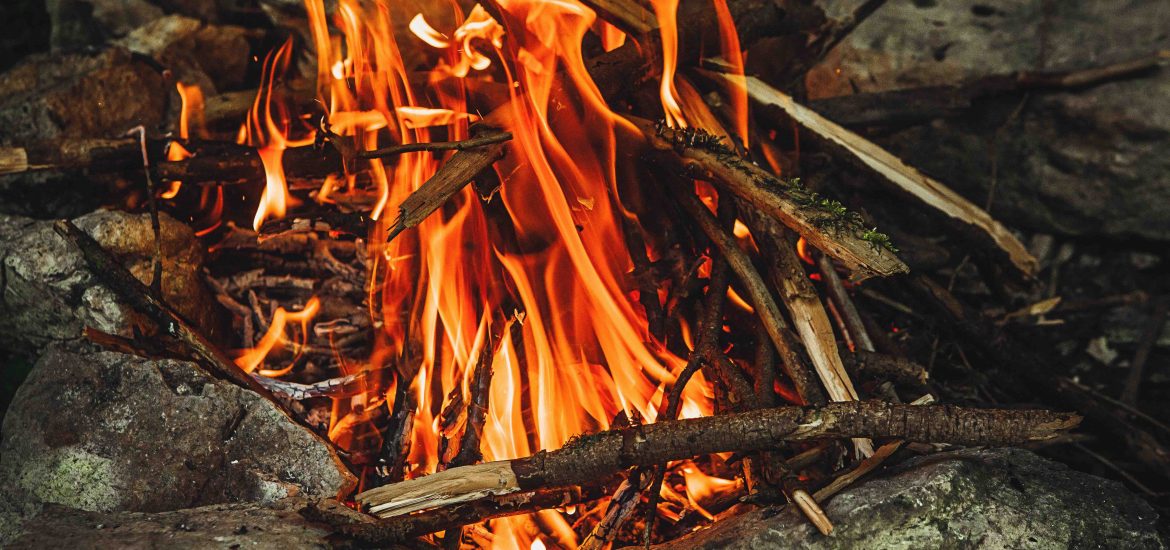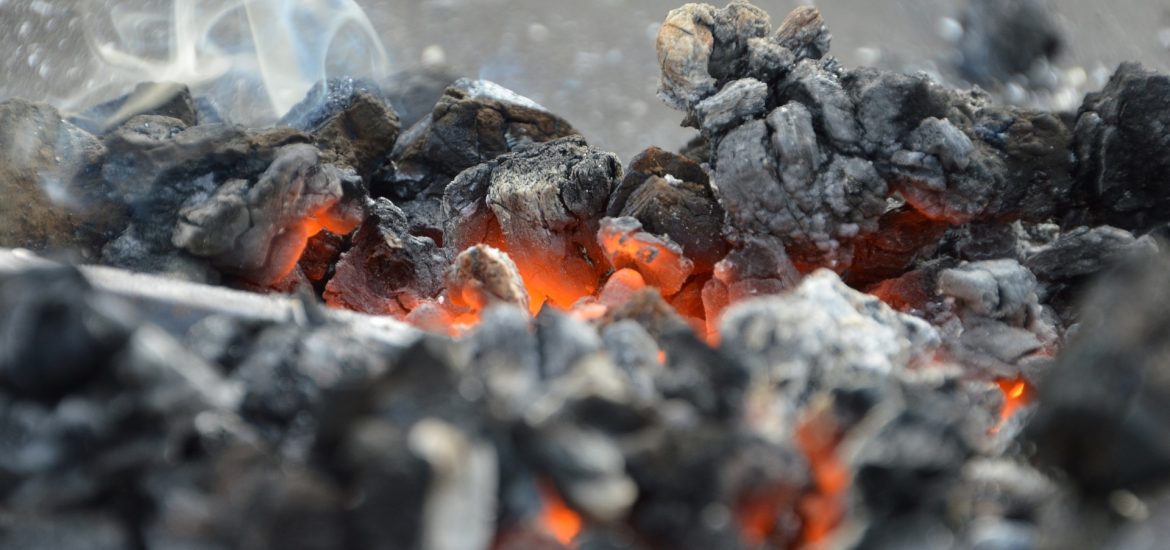Building and starting a fire quickly in all sorts of weather conditions is a skill that takes time and practice to master.
Over the years, I’ve tested and honed different techniques and tricks on how to start a fire consistently while camping.
So, whether it’s a backyard or backcountry bonfire, here are my 5 fire starting hacks and tips that can help you start a campfire faster.

1. Create a Pile of Wood Shavings
By far the best hack to starting a fire quickly is to create a pile of wood shaving before you strike a match.
Using your camp knife, shave the edges of logs and sticks to generate paper thin slivers of wood.
Depending on the weather conditions, I usually make two handfuls of shavings. Then I place the pile at the base of my fire with smaller sticks and logs placed around and on top.
- These shavings have a very high amount of surface area compared to their volume
- Just like a piece of paper, wood shavings can take a flame very easily
This also means they can catch and spread a flame to other shavings quickly. Air, which is essential to any fire, can easily be drawn into the pile of shavings to oxygenate the flames.
The great thing about this hack is that it doesn’t require anything extra to be brought. It just relies on using the fire wood and tools you already have, plus a little bit of effort, to enhance your fire starting capability.

2. Use a Camp Stove in Wet Conditions
On a recent camping trip, we picked up firewood from the campground office. Little did we know that the wood was still very much greenwood and not seasoned at all.
The thing about greenwood, or fresh cut wood, is that it still contains a large proportion of moisture. This moisture makes starting a fire by traditional means extremely difficult.
Alternatively, seasoned firewood (wood that has been cut and left to dry for months) has much less moisture content and can easily ignite.
Case-in-point, it took me over 45 minutes to get a fire going with greenwood. And, the only way I was able to do it was to use my camp stove burner.
Taking the fire logs and splitting them into smaller sticks, I essentially pre-burned a pile of them to remove the moisture and to produce coals.
The pre-burned sticks were then piled together in the fire pit and then lit using sticks that I ignited using the camp stove burner.
I turned my camp stove into a make-shift blowtorch, drying and igniting thin sticks. Once the sticks all ignited, there was enough heat energy to transfer the fire to larger and larger sticks and logs.
Check out firewood explained for more details on the difference between softwood, hardwood and greenwood.

3. Save Paper Products While Camping
Some of the best fire starter is dry paper and cardboard. It ignites easily and burns hot which makes starting a fire super easy.
So, while you’re out camping, it’s always a good idea to save paper products and keep them dry throughout your trip. Don’t just toss them into a fire right away!
Empty toilet paper rolls and paper food packaging such as egg cartons can all be saved to help start your fire.

4. Make and Store Kindling in a Dry Bag
If I know the weather forecast is predicting rain, one of the first things I do while camping is start making kindling from dry fire wood.
I tend to make a lot of kindling at once. But, to keep this kindling safe, I store plenty of it in a dry bag and under a tarp or within my tent vestibule.
Then when it rains, I don’t have to struggle to split wood and create kindling. I can pull out dry wood that can easily ignite and build a fire no matter the weather conditions.
Pro-tips: Need to start a fire in the wet conditions? Check out how to start a camp fire in the rain for tips and instructions!

5. Keep Smouldering Embers in a Metal Pot
One of the easiest ways to start a fire is by using the smouldering embers from a previous fire. This technique is very old, and is commonly used to transport fire over great distances over an extended period of time.
- In an empty can or metal pot, place a bed of dry moss, grass or leaves
- Place the smouldering embers of top, and then cover with more dry material
Embers can last a long time if taken care of properly. You need to ensure only a limited amount of air gets to it, otherwise the wood will burn quickly or snuff out.
Keep this metal pot out of direct wind and rain. Store it under a tarp or inside a tent vestibule. Never keep it inside of your tent! The risk of smoke inhalation or your gear catching on fire is too high.
Once you’re ready to start a fire, use the embers to ignite kindling. Blow air to oxygenate the embers to they burn hotter. Once the kindling is on fire, slowly add larger and larger logs to your fire. Viola, you’ve successfully started a fire without using a lighter or matches!
This article contains affiliate links, which help support this blog at no cost to you!

Great article. Saving paper products is essential to help ignite future campfires.
Yes, absolutely. Dry paper is great fire starter. Thanks for reading and commenting!